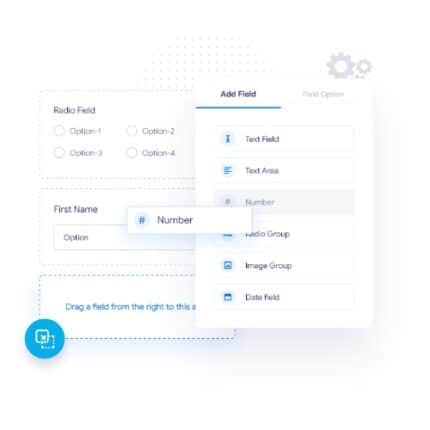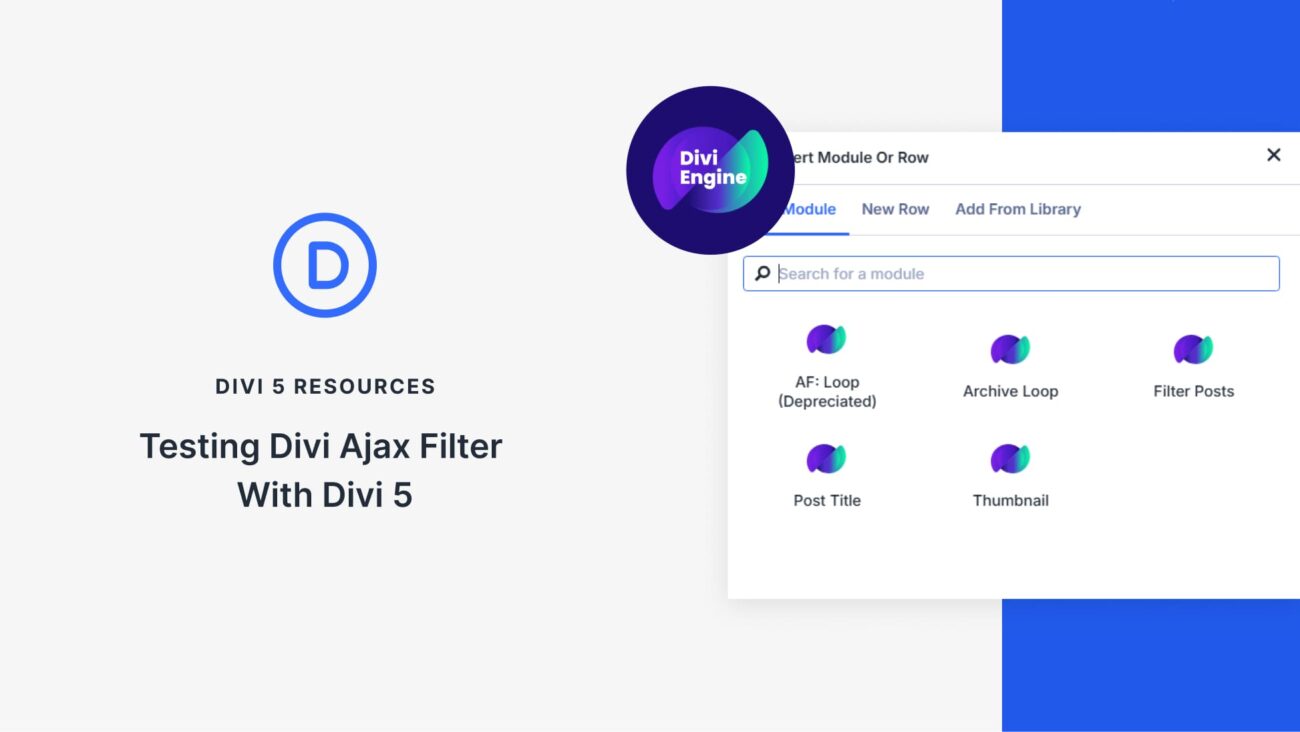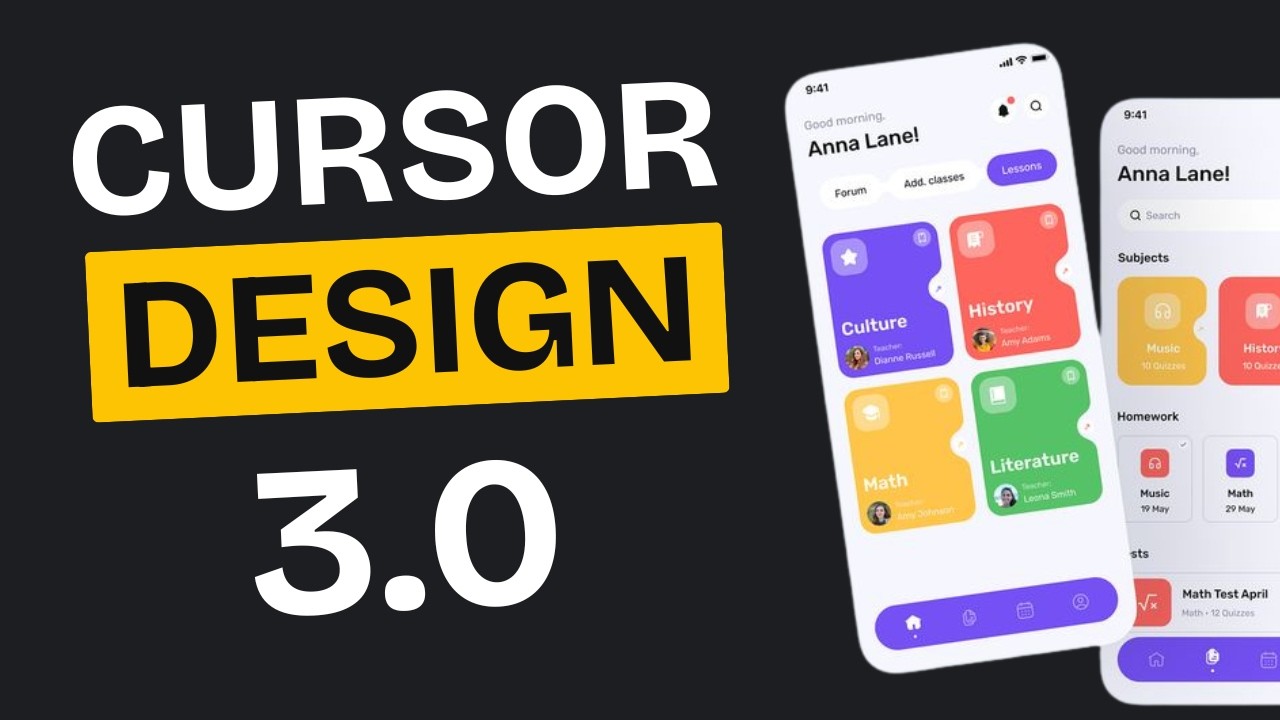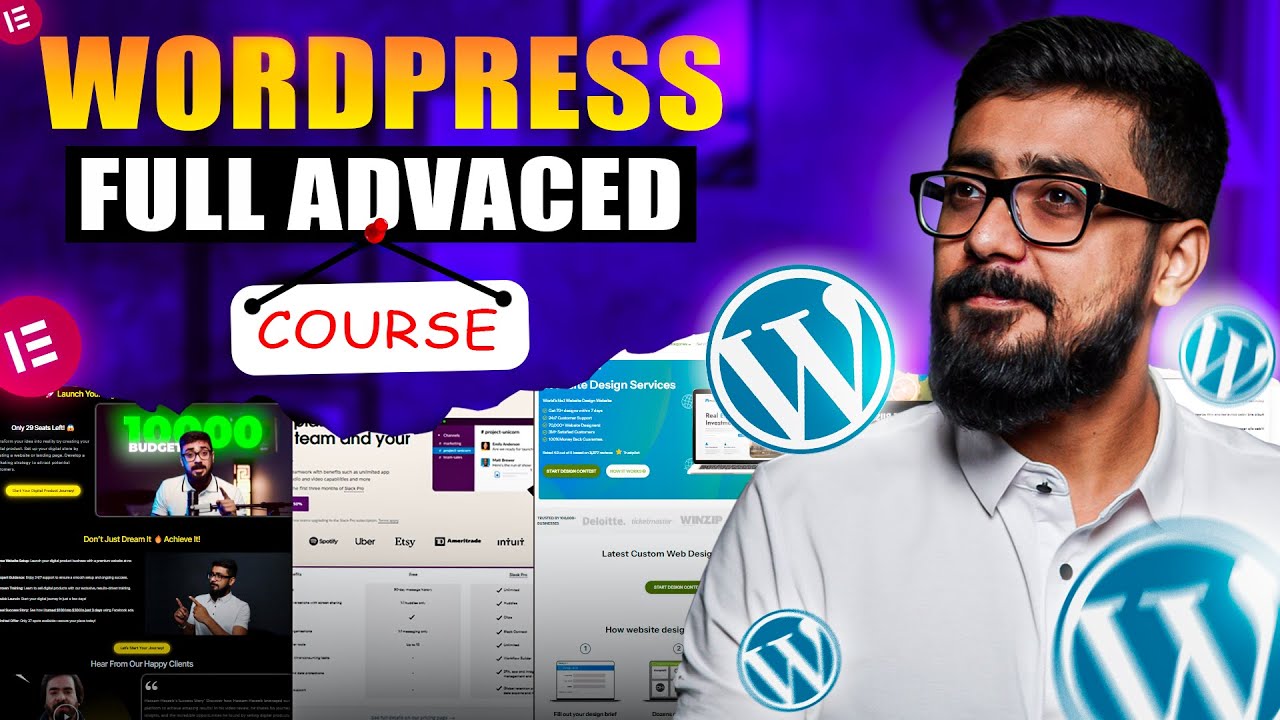Blog
WordPress has been the backbone of the internet for over two decades, powering 43% of all websites as of 2024. But as technology evolves at breakneck speed, a pressing question arises: What does the future hold for this content management system? From AI-driven design tools to headless architectures and enhanced security frameworks, WordPress is undergoing transformative changes that could redefine how we build and manage digital experiences. Let’s explore the innovations shaping its trajectory—and whether they position WordPress to remain the undisputed leader in the CMS space.
The Rise of the Gutenberg Editor: Beyond Basic Content Creation
When WordPress introduced the Gutenberg editor in 2018, it marked a shift from classic text-based editing to a block-driven approach. Six years later, this system has matured into a powerhouse for visual design.
Full Site Editing (FSE) has taken center stage, allowing users to customize every aspect of their website—headers, footers, page templates—without touching a line of code. With drag-and-drop functionality and real-time previews, even non-developers can create professional-grade layouts.
In 2024, expect Gutenberg to integrate advanced features like:
- AI-Powered Block Suggestions: Machine learning that recommends blocks based on your content.
- Collaborative Editing: Real-time co-authoring capabilities for teams.
- Dynamic Content Blocks: Automatically update content across pages (e.g., pricing tables, event calendars).
This evolution blurs the line between developers and content creators, democratizing web design while streamlining workflows.
Headless WordPress: Decoupling the Front End
“Headless” architecture—where the back end (content management) is separated from the front end (user interface)—is gaining traction. WordPress, traditionally a monolithic platform, is adapting to this trend through REST API and GraphQL integrations.
Why Go Headless?
- Flexibility: Use modern frameworks like React or Vue.js for the front end.
- Performance: Faster load times by serving static pages from CDNs.
- Scalability: Handle high traffic spikes without server strain.
Developers can now build interactive, app-like experiences (e.g., single-page applications) while leveraging WordPress’s robust CMS capabilities. Expect plugins and tools for headless setups to proliferate, making this approach more accessible to agencies and enterprises.
AI Integration: From Content Generation to Personalization
Artificial Intelligence is no longer a buzzword—it’s a practical tool reshaping WordPress ecosystems. Platforms like OpenAI and Google Bard are being integrated into plugins and themes, offering functionalities such as:
- Automated Content Drafts: Generate SEO-friendly blog posts or product descriptions in seconds.
- Smart SEO Optimization: AI analyzes top-ranking content and suggests on-page improvements.
- Personalized User Experiences: Dynamically adjust site content based on visitor behavior.
For example, an e-commerce site using WooCommerce could deploy AI chatbots that recommend products or resolve customer queries 24/7. While ethical considerations around AI-generated content persist, the efficiency gains are undeniable.
WooCommerce Evolution: The Future of E-Commerce
Powering 28% of all online stores, WooCommerce remains a cornerstone of WordPress’s ecosystem. Its roadmap includes:
- Native Mobile App Integration: Sync store data seamlessly with custom-branded mobile apps.
- Advanced Analytics: Predictive insights for inventory management and customer retention.
- Subscription-As-A-Service: Simplified tools for recurring payment models.
Additionally, expect tighter integrations with payment gateways like Stripe and cryptocurrency options, catering to a global audience demanding frictionless transactions.
Security as a Priority, Not an Afterthought
With rising cyber threats, WordPress is doubling down on security. The upcoming 6.6 update introduces:
- Auto-Patched Vulnerabilities: Core and plugin updates applied automatically for critical issues.
- Biometric Login Options: Fingerprint or facial recognition for admin access.
- Real-Time Threat Detection: Plugins like Wordfence and Sucuri now offer AI-driven breach prevention.
These advancements reduce reliance on third-party plugins, making secure sites achievable for users at all technical levels.
Accessibility: Building Inclusive Digital Spaces
Web accessibility is now a legal requirement in many regions. WordPress’s commitment to WCAG 2.2 compliance is evident through:
- Theme Review Guidelines: Stricter checks for color contrast, keyboard navigation, and screen reader compatibility.
- Accessibility-Ready Plugins: A curated directory of tools that meet ADA standards.
- Inclusive Block Patterns: Pre-designed layouts optimized for assistive technologies.
This shift ensures WordPress remains a leader in creating equitable online experiences.
The Open-Source Community: Fueling Innovation
WordPress’s longevity hinges on its global community. Contributions from developers, designers, and users drive its adaptability. Emerging trends include:
- Decentralized Contribution Models: Remote collaboration tools for global teams.
- Block Theme Marketplaces: A one-stop shop for purchasing and customizing theme templates.
- Sustainability Initiatives: Plugins that reduce carbon footprints by optimizing site efficiency.
This collective effort ensures WordPress evolves in step with technological and societal needs.
Predictions for the Next Decade
While predicting the future is fraught with uncertainty, several trajectories seem likely:
- WordPress as a SaaS Platform: Managed hosting providers offering turnkey solutions for niche industries (e.g., healthcare, education).
- Voice Search Optimization: Built-in tools for optimizing content for Alexa and Google Assistant.
- Virtual Reality Integration: Plugins enabling 3D product previews or virtual tours.
The platform’s open-source nature ensures it can adapt—but staying relevant will require balancing innovation with simplicity.
Final Thoughts
WordPress isn’t just surviving—it’s thriving by embracing change. By prioritizing usability, security, and cutting-edge tech, it continues to democratize web development for millions. While competitors like Wix or Squarespace cater to simplicity, WordPress’s flexibility and scalability make it indispensable for users seeking full creative control. The future isn’t just bright; it’s dynamic, inclusive, and brimming with possibilities.
Whether you’re a developer, marketer, or small business owner, understanding these trends ensures you’re equipped to leverage WordPress’s evolving toolkit—and stay ahead in an ever-changing digital landscape.
Elementor Pro
In stock
PixelYourSite Pro
In stock
Rank Math Pro
In stock
Related posts
Microsoft Tests Intrusive Windows 11 Boot-Up Ads for Expired 365 Subscriptions
TOP 20: melhores plugins para seu WordPress (2025) | Turbine seu site com essas dicas 🚀
Free AI tools in wordpress for content, wireframes, design, images
5-Week AI Mentorship for Startups in SF
Testing Divi Ajax Filter With Divi 5
Best Websites to Download Free GPL WordPress Themes & Plugins in 2025
3 Ways to Build ACTUALLY Beautiful Websites Using Cursor AI
Global ERP Software Market to Hit $229B by 2033 Amid Tech Boom
Top 12 Robotics AI Blogs/NewsWebsites 2025
FREE WordPress Complete Course For Beginners 2025 | How To Make a WordPress Website
【AI解説】AIと対話しHP生成WordPress.com「AI Website Builder」使い方
Competitive Robotics Programs Build Skills for AI-Driven 2025 Workforce
Products
-
 Team Showcase – WordPress Plugin
Team Showcase – WordPress Plugin
$53.71Original price was: $53.71.$4.02Current price is: $4.02.In stock
-
 ChatBot for WooCommerce – Retargeting, Exit Intent, Abandoned Cart, Facebook Live Chat – WoowBot
ChatBot for WooCommerce – Retargeting, Exit Intent, Abandoned Cart, Facebook Live Chat – WoowBot
$53.71Original price was: $53.71.$4.02Current price is: $4.02.In stock
-
 FOX – Currency Switcher Professional for WooCommerce
FOX – Currency Switcher Professional for WooCommerce
$41.00Original price was: $41.00.$4.02Current price is: $4.02.In stock
-
 WooCommerce Attach Me!
WooCommerce Attach Me!
$41.00Original price was: $41.00.$4.02Current price is: $4.02.In stock
-
 Magic Post Thumbnail Pro
Magic Post Thumbnail Pro
$53.71Original price was: $53.71.$3.69Current price is: $3.69.In stock
-
 Bus Ticket Booking with Seat Reservation PRO
Bus Ticket Booking with Seat Reservation PRO
$53.71Original price was: $53.71.$4.02Current price is: $4.02.In stock
-
 GiveWP + Addons
GiveWP + Addons
$53.71Original price was: $53.71.$3.85Current price is: $3.85.In stock
-
 ACF Views Pro
ACF Views Pro
$62.73Original price was: $62.73.$3.94Current price is: $3.94.In stock
-
 Kadence Theme Pro
Kadence Theme Pro
$53.71Original price was: $53.71.$3.69Current price is: $3.69.In stock
-
 LoginPress Pro
LoginPress Pro
$53.71Original price was: $53.71.$4.02Current price is: $4.02.In stock
-
 Checkout Field Editor and Manager for WooCommerce Pro
Checkout Field Editor and Manager for WooCommerce Pro
$53.71Original price was: $53.71.$3.94Current price is: $3.94.In stock
-
 Social Auto Poster
Social Auto Poster
$53.71Original price was: $53.71.$3.94Current price is: $3.94.In stock
-
 Vitepos Pro
Vitepos Pro
$53.71Original price was: $53.71.$12.30Current price is: $12.30.In stock
-
 Digits : WordPress Mobile Number Signup and Login
Digits : WordPress Mobile Number Signup and Login
$53.71Original price was: $53.71.$3.94Current price is: $3.94.In stock
-
 BookingPress Pro – Appointment Booking plugin
BookingPress Pro – Appointment Booking plugin
$53.71Original price was: $53.71.$3.94Current price is: $3.94.In stock
-
 Polylang Pro
Polylang Pro
$53.71Original price was: $53.71.$3.94Current price is: $3.94.In stock
-
 All-in-One WP Migration Unlimited Extension
All-in-One WP Migration Unlimited Extension
$53.71Original price was: $53.71.$3.94Current price is: $3.94.In stock
-
 Slider Revolution Responsive WordPress Plugin
Slider Revolution Responsive WordPress Plugin
$53.71Original price was: $53.71.$4.51Current price is: $4.51.In stock
-
 Advanced Custom Fields (ACF) Pro
Advanced Custom Fields (ACF) Pro
$53.71Original price was: $53.71.$3.94Current price is: $3.94.In stock
-
 Gillion | Multi-Concept Blog/Magazine & Shop WordPress AMP Theme
Rated 4.60 out of 5
Gillion | Multi-Concept Blog/Magazine & Shop WordPress AMP Theme
Rated 4.60 out of 5$53.71Original price was: $53.71.$5.00Current price is: $5.00.In stock
-
 Eidmart | Digital Marketplace WordPress Theme
Rated 4.70 out of 5
Eidmart | Digital Marketplace WordPress Theme
Rated 4.70 out of 5$53.71Original price was: $53.71.$5.00Current price is: $5.00.In stock
-
 Phox - Hosting WordPress & WHMCS Theme
Rated 4.89 out of 5
Phox - Hosting WordPress & WHMCS Theme
Rated 4.89 out of 5$53.71Original price was: $53.71.$5.17Current price is: $5.17.In stock
-
 Cuinare - Multivendor Restaurant WordPress Theme
Rated 4.14 out of 5
Cuinare - Multivendor Restaurant WordPress Theme
Rated 4.14 out of 5$53.71Original price was: $53.71.$5.17Current price is: $5.17.In stock
-
 Eikra - Education WordPress Theme
Rated 4.60 out of 5
Eikra - Education WordPress Theme
Rated 4.60 out of 5$62.73Original price was: $62.73.$5.08Current price is: $5.08.In stock
-
 Tripgo - Tour Booking WordPress Theme
Rated 5.00 out of 5
Tripgo - Tour Booking WordPress Theme
Rated 5.00 out of 5$53.71Original price was: $53.71.$4.76Current price is: $4.76.In stock
-
 Subhan - Personal Portfolio/CV WordPress Theme
Rated 4.89 out of 5
Subhan - Personal Portfolio/CV WordPress Theme
Rated 4.89 out of 5$53.71Original price was: $53.71.$4.76Current price is: $4.76.In stock
-
 Travel Tour - Travel Booking WordPress
Rated 4.50 out of 5
Travel Tour - Travel Booking WordPress
Rated 4.50 out of 5$53.71Original price was: $53.71.$4.51Current price is: $4.51.In stock
-
 Eduma – Education WordPress Theme
Rated 4.33 out of 5
Eduma – Education WordPress Theme
Rated 4.33 out of 5$53.71Original price was: $53.71.$4.51Current price is: $4.51.In stock
-
 Airtech - Plumber HVAC and Repair theme
Rated 4.80 out of 5
Airtech - Plumber HVAC and Repair theme
Rated 4.80 out of 5$62.73Original price was: $62.73.$5.33Current price is: $5.33.In stock
-
 Bookio – Book Store WooCommerce WordPress Theme
Rated 4.20 out of 5
Bookio – Book Store WooCommerce WordPress Theme
Rated 4.20 out of 5$53.71Original price was: $53.71.$4.92Current price is: $4.92.In stock


















